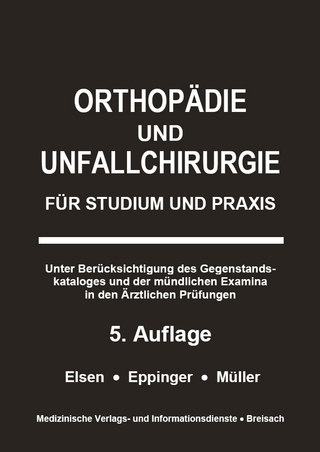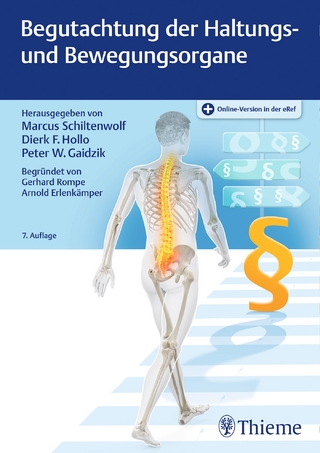The Basic Principles of External Skeletal Fixation Using the Ilizarov Device
- Titel erscheint in neuer Auflage
- Artikel merken
The volume is an overview of the basics of biomechanics of circular external fixation and is based on a system of coordinates that allows safer insertion of K-wires and half pins into the bone. The author includes also a new classification of this device, a collection of terminology, a description of relevant equipments and presents the protocol of external fixation using accurate description of the method in order to avoid mistakes. The book presents a numerical codified system for the application of transosseous wires for the Ilizarov device. In general, the Ilizarov method is not a new technique but a more consolidated one, that has changed the concept of bone healing. The volume could be a manual for orthopaedic surgeons interested in limb reconstruction, limb lengthening, treatment of septic complications of the bone, massive bone loss and open fractures, and could be helpful not only for graduate students and practitioners but also for researchers.
The Author, Dr Leonid Solomin, is head of the External Fixation Department of the Russian Institute of Traumatology and Orthopaedics in St. Petersburg. Both his clinical practice and research are devoted in acute trauma and in reconstructive surgery with particular knowledge of the Ilizarov method.
I. General Aspects of External Fixation 1. Introduction 2. Brief Historical Background, Classification 3. Advantages and Disadvantages, Indications and Contraindications 4. Equipment 5. Terms and Designations of External Fixator Constructs 6. Biomechanical Principles 6.1. Relationship of Transosseous Elements (K-wires, Half-pins) to Surrounding Tissues 6.2. Control of Bone Fragment Position 6.3. Control of Bone Fragment Stability 7. Contradictions of External Fixation. Combined External Fixation (CEF) 8. Method of Unified Designation of External Fixation 9. Atlas for Insertion of Transosseous Element "Reference Positions" (8 levels for each segment) 10. Preoperative Planning 11. Principles of Frame Construction 12. References II. Specific Aspects of External Fixation 1. Introduction 2. Humeral Fractures 2.1. Proximal Humerus (11-) 2.2. Diaphyseal Fractures (12-) 2.3. Distal Humerus (13-) 3. Forearm Fractures 3.1. Proximal Forearm (21-) 3.2. Diaphyseal Fractures (22-) 3.2.1. Ulnar Diaphysis 3.2.2. Radial Diaphysis 3.2.3. Diaphysis of the Radius and Ulna 3.3. Distal Forearm (23-) 4. Femoral Fractures 4.1. Proximal Femur (31-) 4.2. Diaphyseal Fractures (32-) 4.3. Distal Femur (33-) 4.4. Patella (91.1-) 5. Tibial and Fibular Fractures 5.1. Proximal Tibia and Fibula (41-) 5.2. Diaphyseal Fractures (42-) 5.3. Distal Tibia and Fibula (43-) 5.4. Ankle Injuries (44-) 5.5. Chronic Ankle Injuries 6. Compound Fractures 7. Malunited Fractures 8. Correction of Long Bone Deformities 8.1. Technical Tips and Tricks for the Humerus and Forearm 9. Basics of Aesthetic Correction of the Lower Extremities (A.A. Artemjev, O.A. Kaplunov, L.N. Solomin) 10. Non-Uunions, Pseudoarthroses and Long Bone Defects 11. Combined Strained Fixation of Long Bones (CoSF) 11.1. Equipment for CoSF and Principles of Application 11.2. Humerus 11.3. Femur 11.4. Tibia 11.5. Forearm 11.6. Clavicle 11.7. Postoperative Protocol 12. Pelvis Injury 12.1. Malunited Pelvic Fractures 13. Foot 13.1. Forefoot Injuries 13.2. Midfoot Injuries 13.3. Hindfoot Injuries 13.4. Correction of Foot Deformities 14. Large Joint Pathology 14.1. Shoulder 14.2. Elbow 14.3. Wrist 14.4. Hip 14.5. Knee 14.6. Ankle 15. Infectious Complications of Long Bone Fractures 16. Features of External Fixation in Children, Elderly and Senile Patients 17. General Principles of Patient Management in Postoperative Period 18. Mistakes and Complications of External Fixation 19. References
| Erscheint lt. Verlag | 17.3.2008 |
|---|---|
| Zusatzinfo | Illustrations |
| Verlagsort | Milan |
| Sprache | englisch |
| Maße | 210 x 297 mm |
| Einbandart | gebunden |
| Themenwelt | Medizinische Fachgebiete ► Chirurgie ► Unfallchirurgie / Orthopädie |
| ISBN-10 | 88-470-0512-4 / 8847005124 |
| ISBN-13 | 978-88-470-0512-9 / 9788847005129 |
| Zustand | Neuware |
| Haben Sie eine Frage zum Produkt? |
aus dem Bereich





